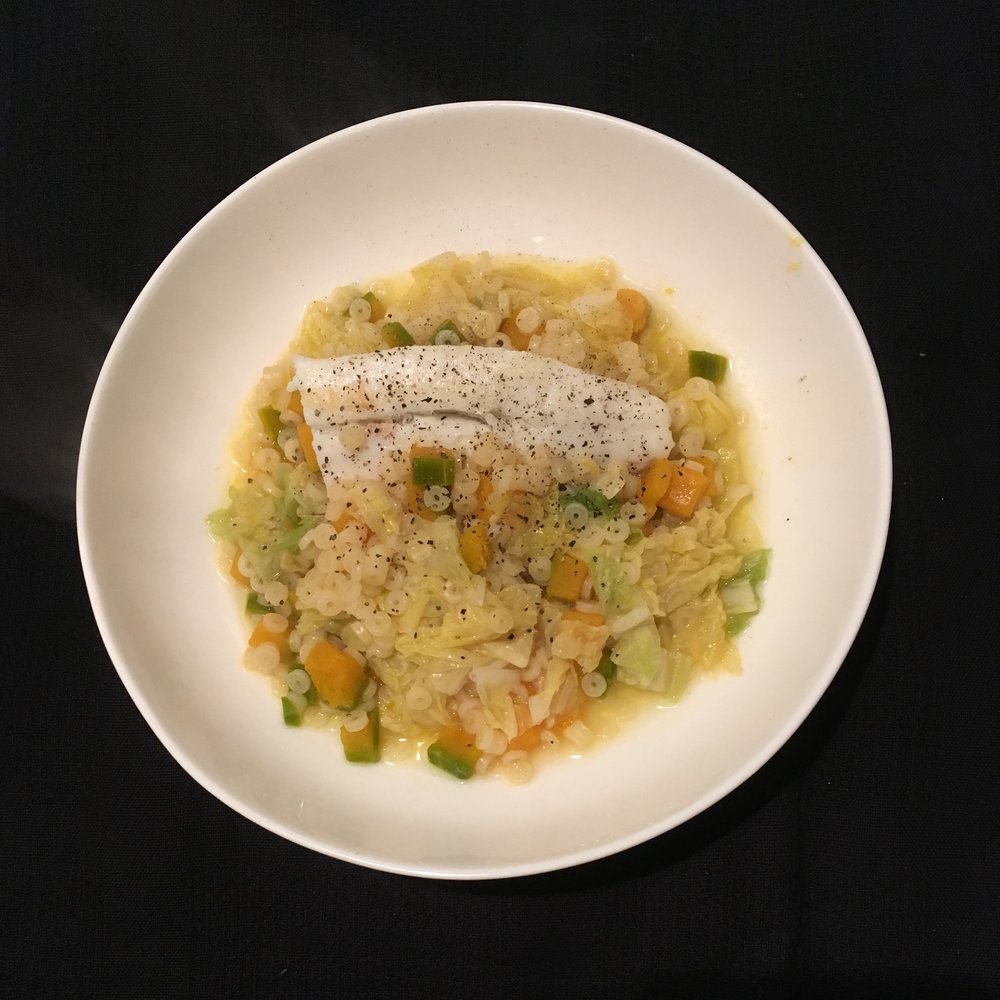This week, our nice little grandma neighbor gave us some salt pickled chinese cabbage. She has offered to teach me how to make it if we like it. Of course we liked it! So next weekend I’m looking forward to learn how to make it. In particular because I like Chinese cabbage but they are too big, and if I buy one we have to eat some for 3 consecutive days of more and I get tired of it. So pickling a part of it seems a very good option to keep it a little longer. And I find actually quite easy to use when pickled, even more than raw.
Last night I used it in an improved recipe where I found it brings the perfect salty-crunchy taste and texture to a very simple saffron pasta soup. I used 1 cup of small soup pasta, 1 dose of saffron, a little piece of butternut squash peeled, a puece of pickled cabbage thinly cut, a piece of flounder, optional, black pepper.
In a pan I boil 0.75l of water, add the saffron and the butternut squash cut in small cubes, the pasta. Separately I grill the flounder in a fry pan. A minute before the pasta are ready I add the cabbage. Stir well. Serve the pasta/veggies then the fish, add black pepper. That’s it!








